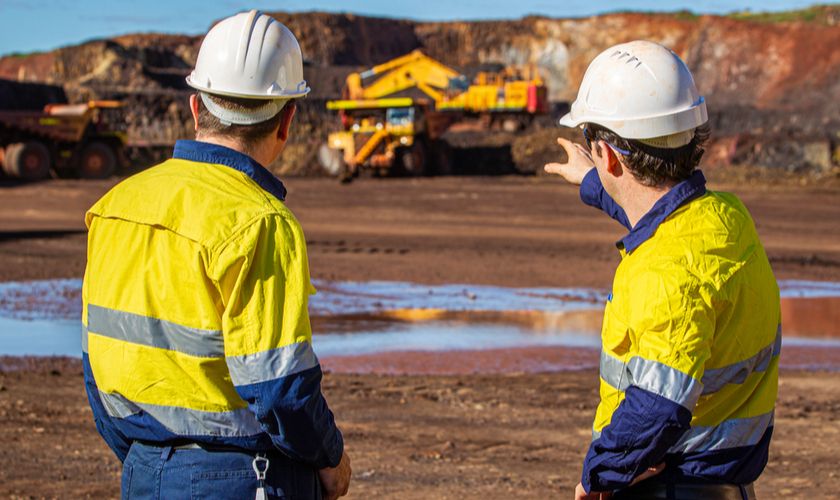
“Argentina has a vast territorial extension with enormous potential for the development of sustainable mining, since approximately 75% of its territory remains unexplored,” says mining lawyer María Fernanda Monteforte. This unexplored territory gives the country the opportunity to significantly increase the production of key minerals such as lithium, gold, silver and copper.
In addition, Argentina is a leading producer of industrial minerals such as lime, borates, gypsum, bentonite, granite and porphyries, and has great potential for the exploration of other strategic resources such as potassium, uranium and critical elements such as rare earths, cobalt, nickel, vanadium, antimony, tungsten, graphite and manganese, essential for technological and energy progress. Mining production in Argentina and other countries in the region is booming, attracting investments from various parts of the world, especially from Asia. Countries such as South Korea, Japan, China and Australia are already present with projects in several provinces.
For mining in Argentina to be truly sustainable, it is necessary to implement certain reviews and initiatives that guarantee adequate control over production and the development of mining potential, an objective shared by companies and governments. One of these initiatives focuses on the closure of mines, with adequate planning that guarantees a safe and healthy environment once the mines have exhausted their useful life. This involves ensuring the physical and geochemical stability of the site, as well as safety for both people and the environment. It also seeks to promote a long-term sustainable socioeconomic transition, taking advantage of the benefits generated during the mining operation.
“Planning for mine closure is essential to prevent and minimize socio-environmental risks and impacts,” says María Fernanda Monteforte. This is achieved through the implementation of good practices, including advance planning and the provision of financial mechanisms to ensure proper execution of the closure. These actions not only ensure a safer environment, but also promote long-term social and environmental responsibility.
Mining activity must adopt proactive measures to address climate change and mitigate its effects. In this context, it is crucial to implement initiatives in line with Law No. 27,520 on Minimum Budgets for Adaptation and Mitigation to Global Climate Change, considering this regulation as a strategic state policy. Mining plays an essential role as a supplier of metallic inputs necessary for renewable energy, the decarbonization of the economy, energy storage and the search for carbon neutrality. In doing so, it contributes to the fulfillment of national climate goals, addressing aspects such as adaptation, mitigation, circular economy and the reduction of greenhouse gas emissions in the long term.
In terms of mining waste management, these are generated during the exploration, extraction and processing phases of minerals. Their management must be responsible and cover the entire life cycle of the mine, applying the best available techniques, the most advanced environmental practices and the principles of the circular economy. Likewise, the prevention and management of social risks linked to mining is a priority, allowing for planning, monitoring and transparency in sectoral policies. In addition to its economic benefits, mining plays a key role in protecting human rights, mitigating social impacts and maximising local development opportunities.
Another key aspect is the initiatives to identify and assess Mining Environmental Liabilities in inactive mines without management or monitoring plans. These old facilities require adequate environmental characterization and risk assessment to plan their management. “Closure plans must follow best practices, ensuring the rehabilitation, reuse and transformation of the site into a valuable environmental asset once mining activity is concluded,” emphasizes María Fernanda Monteforte.
There are international programs such as “Towards Sustainable Mining” (HMS), an initiative launched by the Mining Association of Canada, which establishes global quality and control standards to ensure responsible, transparent and reliable mining. This program provides a set of tools and indicators designed to promote high performance in the industry, ensuring that the main risks associated with mining are adequately managed. In addition, it establishes specific parameters and external control mechanisms to monitor the compliance of mining companies.
By adhering to the Guiding Principles of this initiative, companies commit to work in key areas such as:
- Communities and people: Promote a responsible approach to communities close to operations, prioritizing the health and safety of employees and contractors, and ensuring a suitable environment.
- World-class environmental practices: Develop operations that protect biodiversity and the environment, ensuring high standards of sustainability.
- Energy efficiency and emission reduction: Improve energy efficiency and reduce greenhouse gas emissions through management systems and clear goals, which also contributes to reducing operating costs.
The programme also promotes collaboration with a national advisory group that brings together various stakeholders to foster dialogue, improve industry performance and adapt practices to ensure continued progress, as explained by María Fernanda Monteforte.
The HMS program focuses on transparency, education, communication and the constant improvement of mining practices, adapted to the particularities of each site. Its fundamental principle is continuous improvement, guaranteed by annual internal verifications, led by those responsible for the different areas at the sites and with the participation of the highest authorities of the company. Every three years, an external verification is carried out by contracted auditors, supervised by a panel of independent professionals who represent Argentine society and work on a voluntary basis. This verification seeks to ensure that the performance reported by the site is consistent with the protocols and required documentation, using standard audit tools that include interviews with relevant personnel and review of documentation. If any discrepancies are detected, the external verifier may request additional information and, in some cases, interview local communities to obtain a broader view of the company’s performance.
“Initiatives like HMS set the standards for the future growth of the industry,” says Maria Fernanda Monteforte. As global demand for metals and minerals continues to rise, driven by challenges such as climate change and resource scarcity, the need to adopt sustainable mining practices is more evident and urgent than ever.

Contributor to ReporteAsia.
Source: https://reporteasia.com/sociedad/2024/09/09/maria-fernanda-monteforte-reducir-riesgos/

